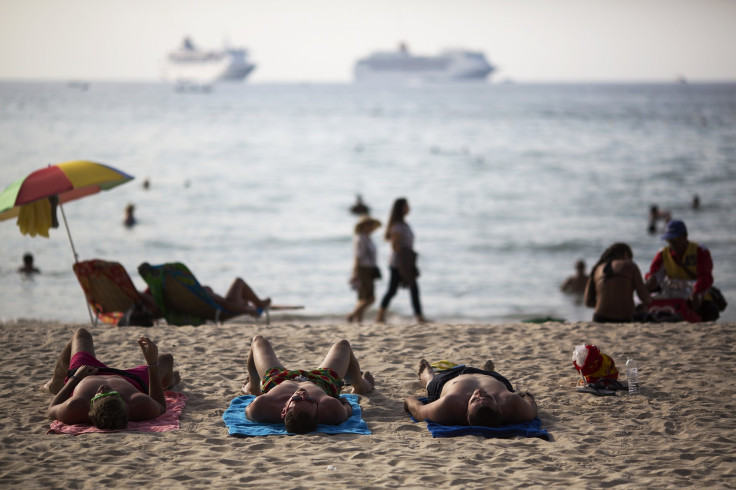Indian Ocean Tsunami Relief Efforts: Civil War, Inexperienced Aid Groups Hampered Recovery

The 2004 Indian Ocean tsunami was one of the most catastrophic events in recorded history, killing more than 230,000 people in 14 countries. While countries around the world gave a total of $14 billion for recovery, distributing the aid was not easy. Internal conflict, destruction of infrastructure and logistical inefficiencies caused all sorts of challenges in getting relief where needed.
When news of the undersea earthquake and resulting tsunami first broke, many countries quickly pledged huge amounts of aid. However, then-United Nations Secretary-General Kofi Annan expressed concern at a press conference in 2005 that countries were not honoring their promises. “It is quite likely that, at the end of the day, we will not receive all of it,” he said. Annan cited the unfulfilled promises during the 2003 Bam earthquake in Iran -- “We got lots of pledges, but we did not receive all the money.”
'One Of The Biggest Disasters We Had Faced'
Once the money began to flow following the tsunami, relief groups had to overcome the problem of access. “There was a complete demolition of infrastructure in the Indian Ocean strip,” said Christopher de Bono, spokesman for UNICEF East Asia and Pacific. “Pretty much every access port was destroyed.” Roads and power lines were down, and isolated communities were the hardest to help because of lack of access.
Relief organizations had to deal with the sheer scale of their tasks. “It was one of the biggest disasters we had faced,” de Bono said. He said despite UNICEF being an organization used to disaster relief, the demands and needs of the 2004 tsunami were much greater than anything expected, and UNICEF was “completely and utterly overwhelmed.” The damage to the region was staggering. The World Bank estimates more than 650,000 people in India alone were displaced by the tsunami. Indonesia suffered $4.45 billion of damage to assets and loss of income streams. Meulaboh, the capital city of West Aceh, was reported flattened completely by the tsunami and accounted for most of Indonesia's casualties. More than 15,000 fishing boats in Sri Lanka were damaged, and nearly 145,000 houses were fully or partly destroyed.
The devastation was so widespread, early responding groups had to prioritize their actions. To try to provide clean water and sanitation to affected communities, organizations first had to clear downed trees and restore power. Then, a malaria outbreak from trapped water also demanded attention, so clearing rubble to contain mosquito breeding was important. Much of the effort also went into ensuring food delivery and access to medical supplies.
Organizations working on the ground ran into logistical problems. They had to decide how to coordinate the massive inflow of aid and its distribution. “In the early days, things could have been better,” said de Bono. Duplication of effort was a problem.
Jane Cocking, humanitarian director of Oxfam Great Britain, said there was an organization system to prevent such duplication problems, but given the influx of help, “there are people or agencies not used to the system.”
UNESCO dedicated $335 million to help Indonesia, but decided Thailand needed only $23 million.
Escalated Civil Conflict
Internal conflict also presented a potential barrier for aid groups. Sri Lanka at the time of the tsunami was engaged in a civil war with the rebel group Liberation Tigers of Tamil Eelam, commonly known as the Tamil Tigers. Indonesia was fighting the separatist group Free Aceh Movement, also known as GAM.
“Times of crises present an opportunity to show who can be the better protector of people,” said R. William Liddle, professor emeritus at Ohio State University, a specialist in Southeast Asian politics. While the tsunami essentially ended the civil war in Aceh, the conflict in Sri Lanka intensified. “Unlike Indonesia, where both parties were looking for a way out of fighting,” said Liddle, “the Sri Lanka parties saw the tsunami as a way to escalate the fighting.”
Cocking said as different regions of the disaster zone were controlled by different parties, agencies providing relief in any region could be seen as benefiting the other party. In addition, the media were reporting both the Tamil Tigers and the Sri Lankan government were accusing each other of blocking aid for political and monetary gain. “The early days after the tsunami were no problem for us going in,” Cocking said of Oxfam’s relief efforts in Sri Lanka, “but as more time went on it became a problem.”
Peter Bauman, an independent consultant who has specialized in examining the tsunami's impact in Indonesia and Sri Lanka, said that the eagerness of aid groups willing to enter Sri Lanka presented a “windfall opportunity” for both political groups. “It’s a great amount of money and supplies,” Bauman said. Many groups only provided immediate or short-term solutions, without thinking of a resulting dependency problem or helping to rebuild the economy, he said.
“Many organizations want to be seen on the international stage as helping these places,” Bauman said, “and thus fail to provide what they really need, which is long-term monitoring and support.”
Thailand was also badly hit by the tsunami and experiencing insurgency in its south at the time, but a strong government, and the fact there were many international tourists there, greatly speeded up its recovery process.
© Copyright IBTimes 2024. All rights reserved.





















